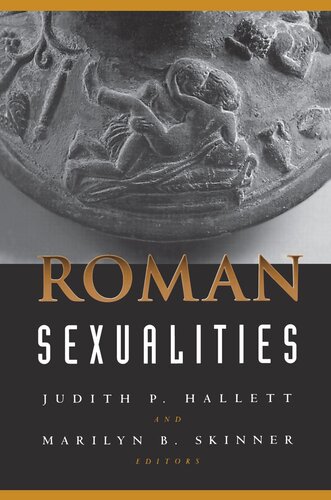

Most ebook files are in PDF format, so you can easily read them using various software such as Foxit Reader or directly on the Google Chrome browser.
Some ebook files are released by publishers in other formats such as .awz, .mobi, .epub, .fb2, etc. You may need to install specific software to read these formats on mobile/PC, such as Calibre.
Please read the tutorial at this link: https://ebookbell.com/faq
We offer FREE conversion to the popular formats you request; however, this may take some time. Therefore, right after payment, please email us, and we will try to provide the service as quickly as possible.
For some exceptional file formats or broken links (if any), please refrain from opening any disputes. Instead, email us first, and we will try to assist within a maximum of 6 hours.
EbookBell Team

5.0
20 reviewsThis collection of essays seeks to establish Roman constructions of sexuality and gender difference as a distinct area of research, complementing work already done on Greece to give a fuller picture of ancient sexuality. By applying feminist critical tools to forms of public discourse, including literature, history, law, medicine, and political oratory, the essays explore the hierarchy of power reflected so strongly in most Roman sexual relations, where noblemen acted as the penetrators and women, boys, and slaves the penetrated. In many cases, the authors show how these roles could be inverted--in ways that revealed citizens' anxieties during the days of the early Empire, when traditional power structures seemed threatened.
In the essays, Jonathan Walters defines the impenetrable male body as the ideational norm; Holt Parker and Catharine Edwards treat literary and legal models of male sexual deviance; Anthony Corbeill unpacks political charges of immoral behavior at banquets, while Marilyn B. Skinner, Ellen Oliensis, and David Fredrick trace linkages between social status and the gender role of the male speaker in Roman lyric and elegy; Amy Richlin interrogates popular medical belief about the female body; Sandra R. Joshel examines the semiotics of empire underlying the historiographic portrayal of the empress Messalina; Judith P. Hallett and Pamela Gordon critique Roman caricatures of the woman-desiring woman; and Alison Keith discovers subversive allusions to the tragedy of Dido in the elegist Sulpicia's self-depiction as a woman in love.